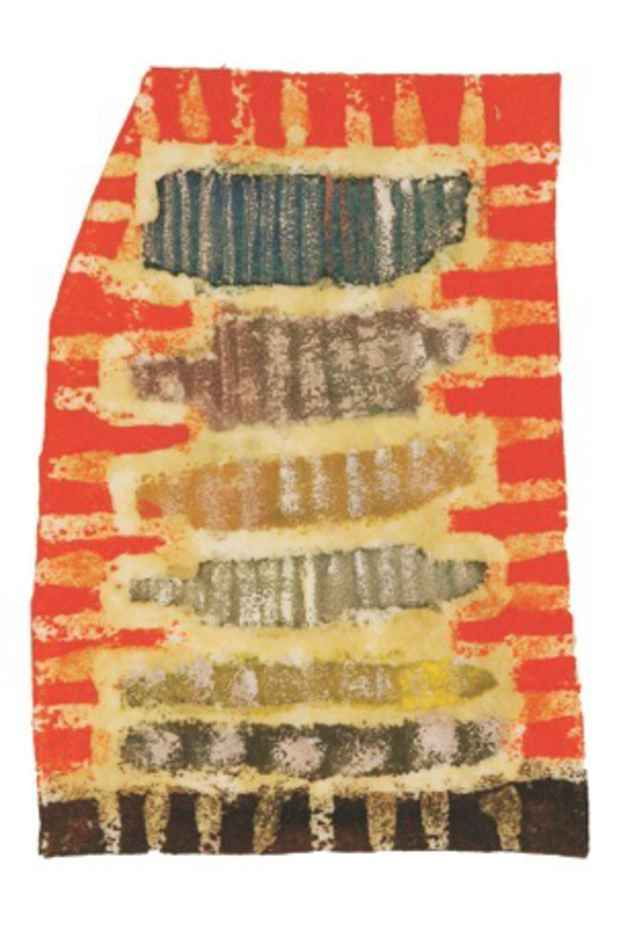Meg Lipke “Sample Narrative - New Works on Paper and Felt”
Parallel Art Space

This event has ended.
The attributes of formalism in art, namely line, color, shape, and pattern, do not exist solely within the confines of a painted picture plane but, of course, surround us daily, configuring and changing themselves into myriad arrangements as we make our way through the world. While strict formalists concern themselves closely with the language and qualities of process attendant to the making of the art object itself, our collective time spent within the post-modern era, with it’s attention to factors such as context, role, and identity, lead us to an awareness that if nothing else, art, like the maker of the art herself, is never composed within a vacuum. Rather, the intention of the artist joins with chosen medium, and together factors such as time, intention, temperament and chance collectively weigh in on and give rise to the realization of form. It is within this area of overlapping methodologies, between the purity of formal abstraction and the translucency of personal memory and familial legacy, where the works of artist Meg Lipke can be found.
A native of the Pacific Northwest, Meg Lipke also spent a great deal of time as a child visiting her maternal grandmother, Patricia Sinclair Hall, in the family home on the outskirts of Manchester England. Here Lipke was exposed to reams of boxes of colorful fabrics and yarns, left over from the family’s inherited wool-mill business. She was exposed also to the creative endeavors of her grandmother’s self-taught art works; clay sculptures of houses and weavings on a home-made tapestry loom, which incorporated many of the yarns and threads stored within the home. Lipke’s working process seems to explore and extract from these early inspirations, spinning from them warp and weft line patterning and bright washes of sinuous color. On materials, the artist offers, “I have appropriated some of the more domestic “craft” materials that P.S. Hall (grandmother) utilized. I have been using beeswax as a resist in paintings on paper and on linen/canvas as a way of reiterating the batik process she used in decorating or designing cloth for personal or familial wear. This body of paintings of my own work uses textile dye as the primary painting medium, and the visual effect is similar to printmaking. The beeswax is sometimes left on the surface of the painting and becomes a sensual part of the surface of the work, while other times it is ironed off onto a secondary piece of paper with a domestic iron; thus fixing the dye and creating a secondary, printed image, which is incorporated into a secondary body of work.”
The impulse to utilize all aspects of the creative process (i.e. secondary mono-print from original work) can be seen as an echoing of the creative legacy handed down to the artist from her grandmother, an ancestor’s creative makings from the detritus of the family-owned business, a sort of industry begetting industry. In fact, Sample Narrative includes a suite of drawings composed atop fading ledger papers torn from old inventory books recently found in Lipke’s family barn in upstate New York, about which she writes, “I was really excited when I came upon the ledger paper, with its ruled lines and graph paper: there is a narrative inherent in the support that draws attention to the idea of taking stock of things, settling accounts, and putting things in order…” Though the material components of Lipke’s endeavors often hail from craft, industrial and design origin, the end results of her undertakings far exceed the source material’s originally intended applications. Fabric dyes, crumbling paper and beeswax blockings give rise to veritable worlds, surreal and fantastic, wherein zero-gravity constellations float and collide with line and shape, in tones both optimistic and ominous.
A consideration of Lipke’s older work reveals abstractions that seem to begin with and quickly depart from, observed reality; sun rays, tree leaves, and water ripples which form the sort of arabesque, foliaceous patterning that are familiar markers within her visual lexicon. The works on view within Sample Narrative seem also to pull from her environs, albeit historical as well as environmental, namely the weaving and fabric works that she encountered during her formative years. Says the artist, “The paintings are also influenced by the act of weaving – in a series of ongoing paintings, lines are layered on top of each other repeatedly to confound and create space. Additionally, a form that I return to often in this investigation is that of the sample card: a card on which different samples of yarn are wound to demonstrate thickness, sheen, color and texture. I wound these as a child for my grandfather. I am exploring this image or format as a way of representing or reiterating a lost voice, or identity.”
It is this re-iteration of voice, the reworking and exploration of identity through form that lends so substantively to Meg Lipke’s works. These abstract compositions, poised between balance and chaos, are wholly formed and valid unto themselves, of course, yet also seem to carry on legacy; one that the artist inherited, is contributing to, and passes on to we viewers who come after.
Media
Schedule
from January 11, 2014 to February 09, 2014
Opening Reception on 2014-01-11 from 18:00 to 21:00